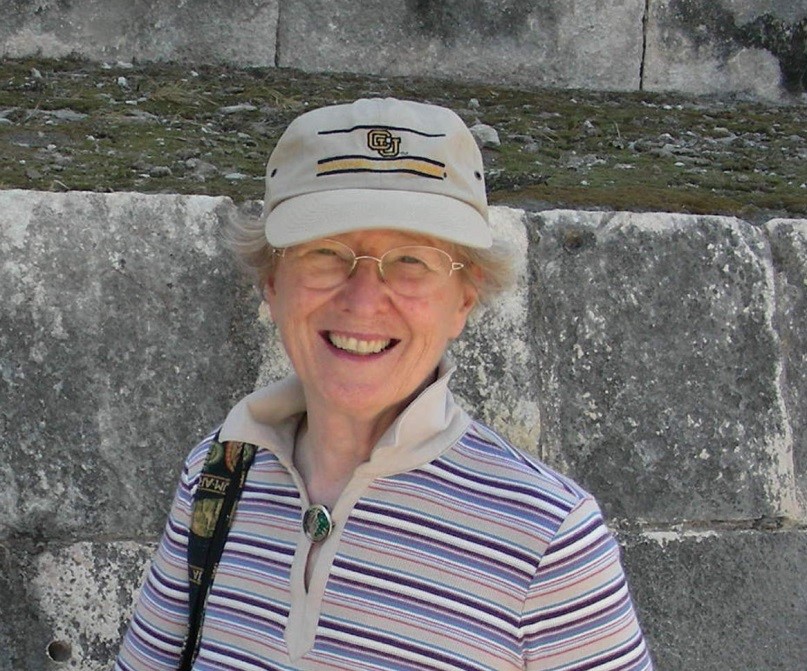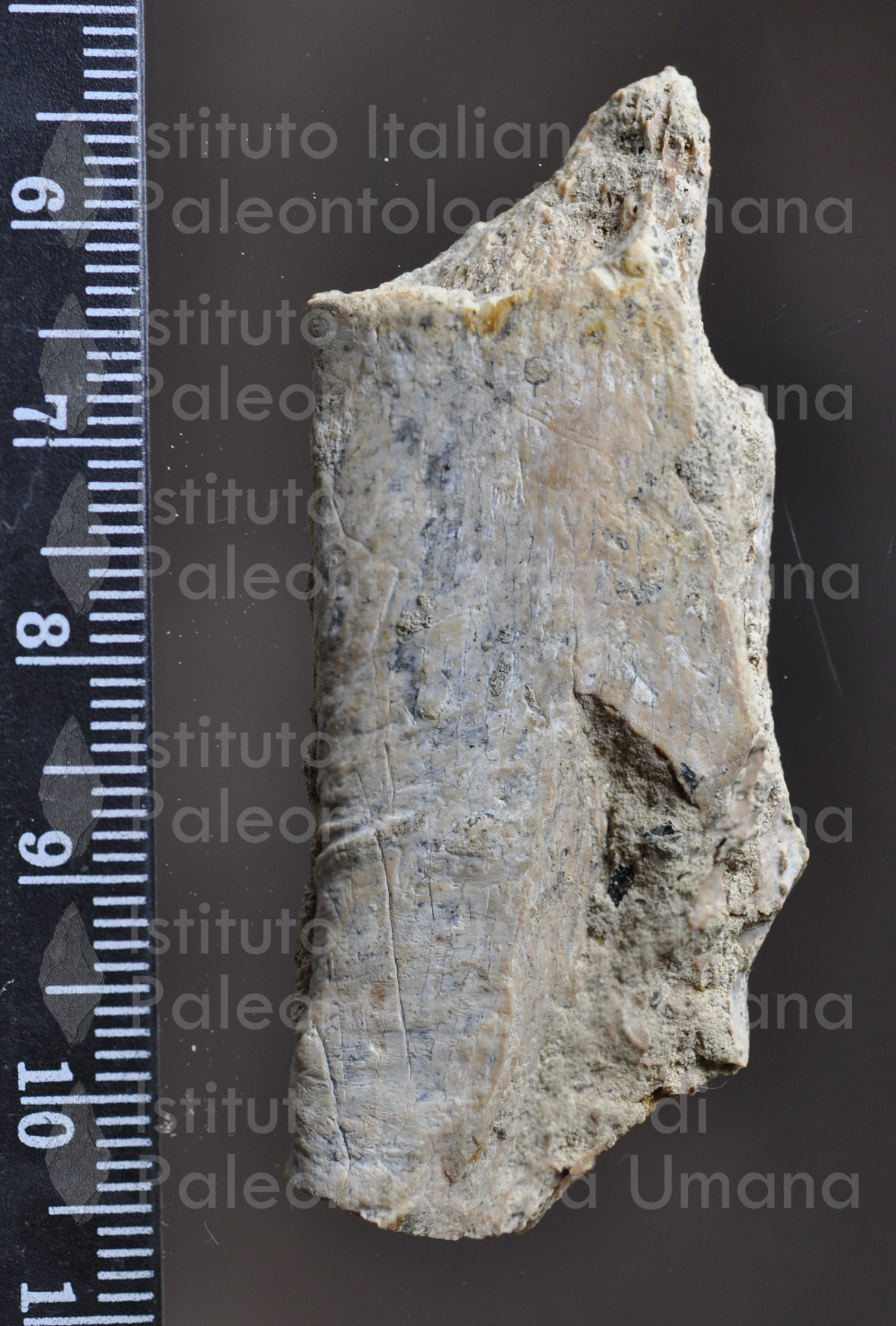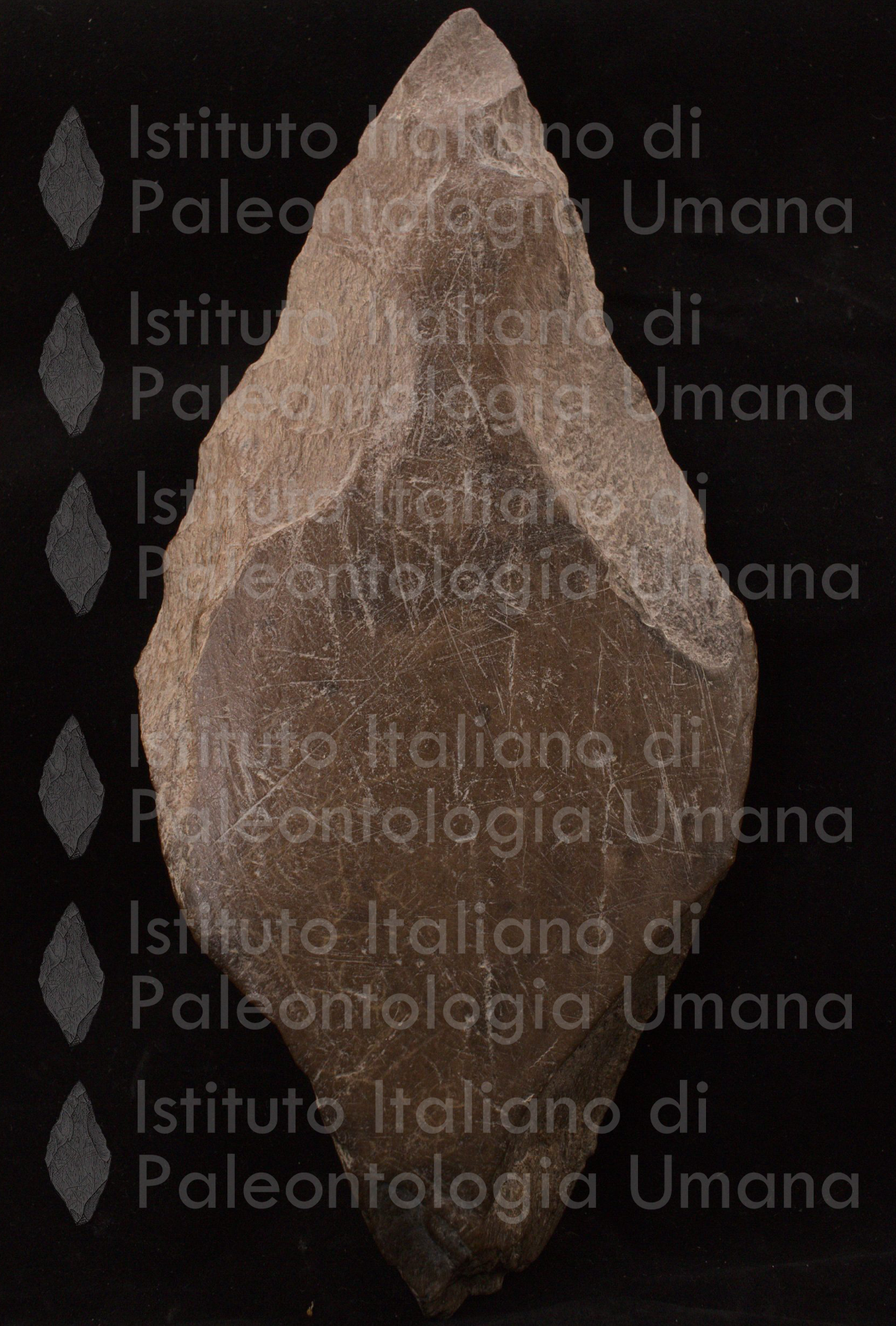Referente Scientifico
Dr. Paola Villa, Curator Adjoint, University of Colorado Museum of Natural History, Boulder,
CO 80309. Email: villap@colorado.edu.

Progetto in corso “Complex bone technology in Latium (Central Italy) at 400,000 years ago”
The Principal Investigator is Paola Villa, collaborators are Stefano Grimaldi, Italo Biddittu, Luca Pollarolo, Francesco Boschin.
Finanziamento. Funding will be requested from the National Science Foundation, USA, to cover:
-international travel by the Principal Investigator (two trips each year for a total of four trips in two years) and local travel to and from Denver airport and Rome airport.
-local travel (fuel for car travel, tickets of regional trains) by collaborators and the PI (Rome to Anagni, Anagni-Pofi, Frosinone-Anagni (by Italo Biddittu) Florence-Rome (one trip/year by Luca Pollarolo) and Siena-Rome by Francesco Boschin.
-lodging and per diem in Anagni for the PI, Stefano Grimaldi, Luca Pollarolo, Francesco Boschin and per diem only for Italo Biddittu (who lives in Frosinone).
-materials and supplies, such as printer, ink jet cartridges, external hard drive for data storage, software upgrades for image transfer, Minigrips and wrapping materials.
– SEM use in Grimaldi’s laboratory, cell phone costs.
Total direct costs in dollars: $ 85,470; in euros 80,070.
Inidirect Costs: $ 22,248; in Euros 20,820
Total $ 107,718; € 100,890
Duration in months: 24 months. Starting date 03/15/2023 ; end date 03/15/2025.
Objectives
This project is an extension of NSF-supported research done between 2018 and 2020 on the bone and stone assemblage of Castel di Guido in the Latium region (Central Italy) published in 2021 by Villa et al. in PLOS One 16, 2021. Recent advances in dating (Pereira et al. Quat Sci Rev 2018) show that some Latium sites, Castel di Guido and Fontana Ranuccio, are very close in time, around 400 ka and other sites such as Isoletta and Lademagne, are only slightly younger, close to the end of MIS 11.The common occurrence of flaked bone artifacts at all sites appeared to be the result of a set of socially transmitted habits between group in the same region. Thus the existence of a regional tradition in Latium is often mentioned but it is a hypothesis more than a fact.
This question was discussed in Villa et al. 2021 but it was not possible to reach a definitive answer due to the lack of comparative data from Latium sites other than Castel di Guido. Providing the needed comparative data on Latium sites is the goal of the present project. We will apply the same system of analysis to two large assemblages of stone and bone tools dated to the same time period (Fontana Ranuccio and Isoletta) to compare with the broadly contemporaneous site of Castel di Guido.
Materials and Methods
The site of Fontana Ranuccio is located in the Latina valley, about 60 km SE of Rome in the Anagni basin. In Frosinone the Latina valley is bounded to the northwest by the Colli Albani volcanic district and to the southeast by the Roccamonfina volcano. Excavation of quarries for the extraction of “pozzolana” (this is volcanic ash used for cement) in the area resulted in opening sections of Pleistocene deposits. The site was discovered in 1976. It is now dated to 408 ± 10 ka by 40argon/39argon (Pereira et al. 2018).
The portion of the archaeological layer preserved from quarry destruction was excavated by the Italian Institute of Human Paleontology (IsIPU). The archaeological layer is about 1 m. thick and was preserved over 1000 sq m. The stone artifacts, faunal remains and bone tools come in part from the excavation and in part by collecting reworked material with continuous surveys observing the layer reworked by the quarry machines. A preliminary analysis of the content of six of the boxes in the Anagni deposit allowed us to select 172 bone tools or possible bone tools (to be studied). There are 85 more boxes to be examined.
Isoletta is a small town near the confluence of the Sacco river into the Liri. Archaeological material was found in the building of two galleries for a high–velocity train line between Rome and Naples. The lithics, fauna and bone artifacts are stored in the museum of Pofi. Preliminary analysis indicates 108 modified bones but there are more boxes to be examined.
The analytical procedures will be the same as those used for the analysis of the Castel di Guido bone tools.
Referente Scientifico
Dr. Paola Villa, Curator Adjoint, University of Colorado Museum of Natural History, Boulder,
CO 80309. Email: villap@colorado.edu.
Progetto in corso “Complex bone technology in Latium (Central Italy) at 400,000 years ago”
The Principal Investigator is Paola Villa, collaborators are Stefano Grimaldi, Italo Biddittu, Luca Pollarolo, Francesco Boschin.
Finanziamento. Funding will be requested from the National Science Foundation, USA, to cover:
-international travel by the Principal Investigator (two trips each year for a total of four trips in two years) and local travel to and from Denver airport and Rome airport.
-local travel (fuel for car travel, tickets of regional trains) by collaborators and the PI (Rome to Anagni, Anagni-Pofi, Frosinone-Anagni (by Italo Biddittu) Florence-Rome (one trip/year by Luca Pollarolo) and Siena-Rome by Francesco Boschin.
-lodging and per diem in Anagni for the PI, Stefano Grimaldi, Luca Pollarolo, Francesco Boschin and per diem only for Italo Biddittu (who lives in Frosinone).
-materials and supplies, such as printer, ink jet cartridges, external hard drive for data storage, software upgrades for image transfer, Minigrips and wrapping materials.
– SEM use in Grimaldi’s laboratory, cell phone costs.
Total direct costs in dollars: $ 85,470; in euros 80,070.
Inidirect Costs: $ 22,248; in Euros 20,820
Total $ 107,718; € 100,890
Duration in months: 24 months. Starting date 03/15/2023 ; end date 03/15/2025.
Objectives
This project is an extension of NSF-supported research done between 2018 and 2020 on the bone and stone assemblage of Castel di Guido in the Latium region (Central Italy) published in 2021 by Villa et al. in PLOS One 16, 2021. Recent advances in dating (Pereira et al. Quat Sci Rev 2018) show that some Latium sites, Castel di Guido and Fontana Ranuccio, are very close in time, around 400 ka and other sites such as Isoletta and Lademagne, are only slightly younger, close to the end of MIS 11.The common occurrence of flaked bone artifacts at all sites appeared to be the result of a set of socially transmitted habits between group in the same region. Thus the existence of a regional tradition in Latium is often mentioned but it is a hypothesis more than a fact.
This question was discussed in Villa et al. 2021 but it was not possible to reach a definitive answer due to the lack of comparative data from Latium sites other than Castel di Guido. Providing the needed comparative data on Latium sites is the goal of the present project. We will apply the same system of analysis to two large assemblages of stone and bone tools dated to the same time period (Fontana Ranuccio and Isoletta) to compare with the broadly contemporaneous site of Castel di Guido.
Materials and Methods
The site of Fontana Ranuccio is located in the Latina valley, about 60 km SE of Rome in the Anagni basin. In Frosinone the Latina valley is bounded to the northwest by the Colli Albani volcanic district and to the southeast by the Roccamonfina volcano. Excavation of quarries for the extraction of “pozzolana” (this is volcanic ash used for cement) in the area resulted in opening sections of Pleistocene deposits. The site was discovered in 1976. It is now dated to 408 ± 10 ka by 40argon/39argon (Pereira et al. 2018).
The portion of the archaeological layer preserved from quarry destruction was excavated by the Italian Institute of Human Paleontology (IsIPU). The archaeological layer is about 1 m. thick and was preserved over 1000 sq m. The stone artifacts, faunal remains and bone tools come in part from the excavation and in part by collecting reworked material with continuous surveys observing the layer reworked by the quarry machines. A preliminary analysis of the content of six of the boxes in the Anagni deposit allowed us to select 172 bone tools or possible bone tools (to be studied). There are 85 more boxes to be examined.
Isoletta is a small town near the confluence of the Sacco river into the Liri. Archaeological material was found in the building of two galleries for a high–velocity train line between Rome and Naples. The lithics, fauna and bone artifacts are stored in the museum of Pofi. Preliminary analysis indicates 108 modified bones but there are more boxes to be examined.
The analytical procedures will be the same as those used for the analysis of the Castel di Guido bone tools.


